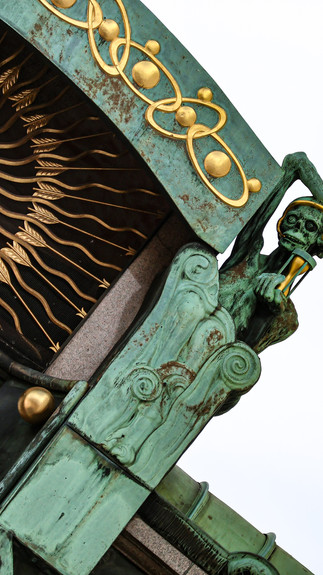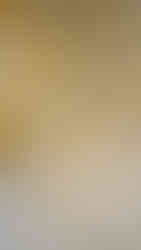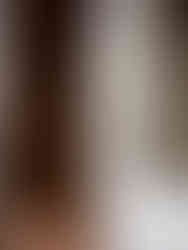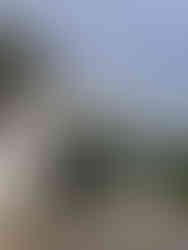Art Nouveau | Vienna route
- Nib & Ember

- Nov 12
- 6 min read
Updated: Nov 13
One of my favourite routes in the VIENNA route booklet is the one dedicated to Art Nouveau – the golden era of Vienna. To me, this is the Otto Wagner route. Absolutely lovely! Especially if you manage to visit the pavilions and spend some time appreciating Wagner’s work – both materialised and conceptual.

When you follow this route, I recommend paying close attention to the day you choose, as the Otto Wagner Pavilions are open only on weekends. The good news is that on the first Sunday of every month, entry is free of charge.
Main stops on the route:
Anker Clock
I am verry happy that I decided to bring my camera with me and take some pictures of the Ankeruhr, because that is the only way to see it in details and appreciate it in its full glory. From birth to death, from sunrise to sunset, from the first to the last hour - everything moves in cycles and this masterpiece has a beautiful way of showing it.
The work of Franz Matsch is the reason why so many people stand still at exactly 12:00 o'clock every day at Hoher Markt 10-11 and wait for the figures to start moving. It is absolutely worth it, especially if you are able to see it up close.
I took a video of the clock for those of you who are not able to visit Vienna, but since I was not using a tripod and the figures take 11 minutes to fully rotate, the sped up virsion (cutting the time to a bit more than a minute) is extremely shaky and probably unwatchable. Let me know in the comments, if you'd like me to upload it anyway.
Art Nouveau WC on Graben
Here I am, on a foggy November Wednesday, writing this blog post and noticing that I missed visiting the Art Nouveau toilet at Graben in summer, so I basically took the U1, just to go to the toilet in the center of Vienna. Well, partially so, because I only asked the lady at the facility to take pictures, but still - technically true. You are welcome! ;)
Small dark-wood cabins, each with a brown toilet seat and a sink with golden faucets in the corner. It does take you back in time and if you find yourself in an urgent need of a toilet, while shopping at the fancy Graben, you can relieve yourself, surrounded by history.
Augarten flagship store
Back in summer, when I was rushing through the first district in order to manage with this route on time, I paid a quick visit to the Augarten flagship store, which is the third stop from the booklet suggestions. Augarten porcelain is beautiful (and famous), but if you have more time on your hands, I'd siggest you visit the Augarten Porcelain Museum in the second district, which would provide more context to your experience and I'm sure you can also buy yourself something there, too.
Österreichische Werkstätten
This is a stop for the people who want to buy something from Vienna, when visiting the city. Although... there was also furniture there, so I'm not sure how that would work. The selection of items is definately not limited to Austrian production only, which I find a rather curious choice, but fine. I am not the target audience of the shop anyways, but it does have an interesting selection of items, so if you're into shopping, probably pay it a visit.
Otto Wagner Pavilions
My absolute favourite part of the whole VIENNA route experience, to be honest! It inspired me to dive deeper into the work of Otto Wagner.
When you visit the pavilions at Karlsplatz, you get two very different experiences - one is a museum, the other is turned into a nice café (see the end of the post).
The museum is small, but if you stop and read everything, you will find such interesting facts about Otto Wagner and his impact on what Vienna looks like. It is wonderful that we have many realised projects, preserved and functional even nowadays, but I feel a bit sad that other ones never came into realisation. His vision is both detailed and full of air, both humbling and welcoming. I am a fan of his work and I became one after visiting this museum, so don't skip this, if you can.
Secession
A positive surprise for a person who is not really into art. And to be completely transparant with you, if it wasn't for the guide, I probably would have taken my time visiting the Secession. And it would have been a mistake.
Apart from being quite an impressive building, the Secession gives visitors the opportunity to see one of Gustav Klimt's impressive works: The Beethoven Frieze. I love it! And mind you - I am not Klimt-obsessed, but this was so touching. My favourite part is the middle wall: the Hostile Forces. But since I have not taken a good picture of it, here you have some happy ending and The Choir of Angels:

The temporary exhibition at the time of my visit included the "Fish are folded into the sea just as the sea is folded into fish" by Ariane Mueller :
"Fish are folded into the sea just as the sea is folded into fish is divided into two spheres facing each other that Mueller associates with war and peace, respectively. In the former, she presents new large-format depictions of natural sceneries. The artist sketched them around Vienna and in Styria or took inspiration from pictures by the Chinese painter Shi-Tao. They show various paths that lead out into the countryside – wrong paths, as the artist notes. "
I loved walking through these sceneries and feel all of the light and colours that radiate from Ariane Mueller's work of art.
And the final surprise was an installation by Jeremy Shaw:
"In the final room, visitors encounter Devotion Structure (Accumulated) (2025), a steel votive stand housing 247 red handblown glass candleholders. Arranged in a grid, they contain wax LED candles, some of which are flickering at random intervals, accompanied by the faint scent of burning paraffin wax. After a while, the quiet sound of clinking glass can be heard as the flickering becomes more widespread. The synthetic flames slowly coalesce into a single-point perspective vortex animation that engulfs the grid, accompanied by synchronized pulsing sounds from within. The animated wormhole accelerates and spins towards a feverish, surround-sound crescendo, manifesting the hypnotic dramaturgy of prayer, piety, and devotion in an interplay of light, shadow, movement, and sound. Perhaps one has finally arrived at an event horizon of sorts, even if it is located at the end of an ordinary gallery room."
What an absolute delight that was! I spent a lot of time watching those LED candles and it did feel like meditation.
Buildings by Otto Wagner

We are back to Otto Wagner: along the Wienzeile we come to the Majolikahaus and its ceramic tiles. This picture doesn't do it justice, but since not many do anyways, it is kind of pointless to even try.
What would actually make sense is to read ot listen to some kind of impression by a person with deeper knowledge of Vienna's architecture history, like Architect Philipp, who has dedicated social media channels to the exact topic in question. And I remember that the first reel on Instagram that I ever saw from him was dedicated exactly to the Otto Wagner buildings at the Wienzeilen.
But if you don't share my level of curiosity, a walk along the boulevard is also quite sufficient.
Café Rüdigerhof
Café Rudigerhof is a typical Viennese Café where you can see (and meet) people of all ages having their coffee or meal, reading a newspapers or simply talking to one another. The shady summer garden is a magnet during the hot months of the year. When I visited it during my city tour, I couldn't find a place to sit outside, so I did not get to experience the service, but if you've already been there, you can share your impressions in the comments!
A little tip: since you’ll already be at Karlsplatz for this route, don’t miss the chance to take the U4 and visit the Otto Wagner Pavilion in Hietzing. Then return to Karlsplatz and have something to eat at Karl & Otto, a lovely café located in one of the Wagner Pavilions. And if you have even more time, it is an absolute must to visit the Otto Wagner Areal in the 14th district.
Otto Wagner Pavilion in Hietzing
It was an interesting visit at the Otto Wagner Pavilion in Hietzing: originally built to host Emperor Franz Joseph, the pavilion was actually used by him only twice. It had been forgotten, renovated and now it is open to visitors during the summer months of the year.
Karl & Otto. Café
A lovely summer morning - having breakfast at one of Otto Wagner's Pavilions, observing the other one right across from me. Karl & Otto is a nice place, where I was welcomed with a smile by the girl who served me breakfast and allowed me to take a few photos of the interior. I definately recommend the place and I should pay it another visit and see how things work around there in the colder months.
NIB & Ember
























































Comments